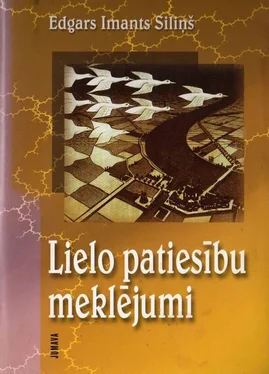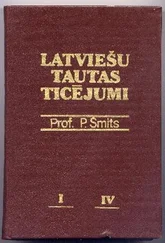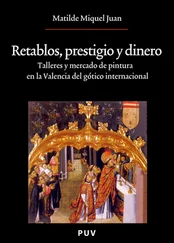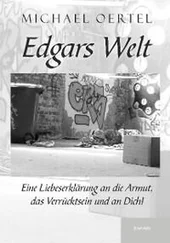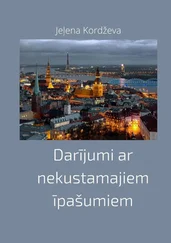14. born m. (ed.) the born—einstein letters. — london: Macmillan, 1971.
15. * brillonin l. science and information theory. —new york: Academic Press, 1956.
16. Buiķls A. Gēte, Rainis un modernās dabaszinātnes. — Rokraksts (13 lpp.), 1997.
17. *EynraKOB M. Mucrep n MuprupuTu.— Mockbū: Mockbs, 1966, 1967. 17a. *Bulgakovs M. Meistars un Margarita. — R.: Jumava, 1996.
18. cameron j. the artists way. —new york: putnam book, 1992.
19. cander l. m. fractal groming. — scientific american, v. 256, No. 1, Jan. 1987.
' Ar zvaigznīti * atzīmēta lasīšanai īpaši ieteicamā literatūra.
20. 'capra f. the tao ofphysics. an exploration ofparallels between modern physics and Eastern mysticism. — London: Flamingo, 1986.
21. * capra f. uncommen wisdom. —london: flamingo, 1989.
22. * capra f. the web of life, a new scientific Understanding of Living Systems. — New York: Bantum Inc., 1996.
23. *carnap r. philosophical foundations of physics. an Introduction to the Philosophy of Science. — New York, London: Basic Books, 1971.
23a. KapHan P.
24. "chalmers d. the conscious mind. in search of a Fundamental Theory. — Neiv York, Oxford: Oxford University Press, 1996.
25. chalmers d. the puzzle of conscious experience. — Scientific American, Dec. 1995. p. 62.
26. *convey p., highfield r. frontiers of complexity. the search for order in chaotic world. — New York: Faiucett Columbine, 1995.
27. *crick f. the astonishing hypothesis. the search of the Soul. — New York: Scribner, 1994.
28. Crutchfield J. P., Farmer J. D., Packard N. H., Shaw R. S. Chaos. — Scientific American, v. 255, No. 6, Dec. 1986.
29. Čaterdži S. K. Balti un ārieši. — R.: Zinātne, 1990.
29a. Damon F. S. A Blake Dictionary (The ideas ofW. Blake). — U Press of New England, 1988.
30. dante aligjēri. Dievišķā komēdija. — R.: Vaidelote, 1994.
31. * de broglie l. sur les sentiers de la science. — paris: albin Michel, 1960.
31a. EpoHJih JI. fle. no TponaM nuyKH. — Mockbū: HI'Ul, 1962.
32. dictionary ofBiographical Ģuotation. — Eds. J. Wintle and R. Kenin, Routledge and Kegan Paul. London, 1978.
33. dimdem. weltam wendepunkt nostradamus. —falken verlag, Germany, 1996.
33a. Dimde M. Nostradams. — R.: Jumava, 1997.
34. * dostojevskis f. brāļi Karamazovi. Kopoti raksti, IX un X sēj. — R.: Liesma, 1978.
35. dostojevskis f. kopoti raksti, i-x sēj. — r.: Liesma, 1975.
36. dreimanis a. a possible mechanism of creative thinkingfrom the View Point of Nonlinear Science. —A Synergetical Approach, Interdisciplinary Tools, 1996.
36a. Duff M. The theory formerly known as Strings. — Scientific American, Feb. 1998, p. 54.
37. hhpak ii. a. m. rocnomhhamm o heo6hi
38. eglitc g. kavabata jasunari. — grāmata, ad mcmxc ii, 38. lpp.
39. * eiduss j. tita lukrēcija kāra poēma «par Lietu Dabu» (De rerum natūra). — Stokholma—Riga, 1997.
40. * eiduss j., Šiliņš e. fotonika. — r.: liesma. 1974.
41. * einsici» a. on science. cosmic Religion, with Other Opinions and Apho- risnu.— New York: 1931, p 97-103.
42. einstcin a. religion und wissenschaft. — berliner Tageblatt, 11 Nov. 1930. (Ievietots arī krājumā «Mein Weltbild», 1994, S. 16-20).
43. sitanrrehh a. cočpmme h
44. engler b. g., scully m. o., walther h. the duality in matter and Light. — Scientific American, Dec. 1994, p. 56.
45. everett h. the theory of universal wave function. — in: The Many-Worlds Interpretation of Ģuantum Mechanics. Princeton: Princeton University Press, 1973.
46. *exploring chaos. a Guide to the New Science of Disorder. Ed. by Ņina Hall. W. W. Northon and Co. New York, 1993.
47. *fromm e. escape fiom freedom, 1990.
47a. 4>pOMM 3. Bercmo crr cbo6qj1IJ. — Mockbu: rjporpccc: 1990.
48. *fromms Ē. mīlestības māksla. — R.: Jumava, 1994.
49. fujivara yuchiku. rikka. the soul ofjapanese flower Arrangement. —Tokyo: Shufunotomo Co., 1983.
50. gardner m. the combinatorial bases of the «i ching» the Chinese Book of Divination and Wisdom. — Scientific American, Jan. 1974.
51. "gardner m. the night is large. collected essays 1938-1995. — New York: St. Martins Press, 1996.
52. *gell-mann m. the quark and the jaguar. adventures in the Simple and the Complex. — Ne tu York: Freeman and Co., 1994.
53. gibbs w. w. profilē: george f. r. ellis. thinking Globally, Acting Univer- sally. —Scientific American, Oct. 1995, p. 28.
54. *gleick j. chaos. making a new science. —pinguin books, 1988.
55. goldberg a. l., rigney d. r., west b. j. chaos and fractals in Human Physiology. —Scientific American, v. 262, No. 2, Feb. 1990.
56. "gorders j. Sofijas pasaule. Romāns par filozofijas vēsturi. — R.: Zvaigzne ABC, 1996.
57. gould s. j. the evolution of life on the earth. — Scientific American, Oct. 1994, p. 63.
58. grown j. w. the life and the mind. — new jersey: Hillsdale, 1988.
59. *gucnon r. the crisis ofmodern world. — london: luzac, 1962.
60. *guenon r. the reign of quantity and signs of the times. — Penguin Books Inc. Baltimor Md., 1972.
61. * haken h. synergetics. — heidelberg: springer-verlag, 1978.
61a. Xaxen T. CiiHcpreruKU. —Mockba: \lnp, 1980.
62. haken h. principles ofbrain functioning. — heidelberg: Springer-Verlag, 1996.
63. hamlet. complete study Edition, edited by S. Lamb, Clijf s Notēs, Linkoln, Nebraska, 1965.
64. * hawking s. w. a brief history oftime. from the big bang to black Holes. — Neto York: Bantum Books, 1978.
64a. Hokings S. īsi par laika vēsturi. — R.: Madris, 1997.
65. hawking s. w. black holes and baby universe. — london: Bantum Books,
1993.
66. *hawking s., penrose r. the nature of space and time. — Scientific American, ]uly, 1996, p. 44.
67. 'heidegger m. the end of phylosophy. — new york: harper and Row, 1973.
68. 'heisenberg w. physics and phylosop!jy. —neu> york: harper and Row, 1962.
69. herdera vārdnica simboli— «pētergaila» bibliotēka, Rīga, 1994.
70. herings e. faraona tēlnieks. — r.: zinātne, 1972.
71. *hese h. Stikla pērlīšu spēle. — R.: Liesma, 1976.
72. 'hofstadter r. d. godel, escher, bach. an eternal golden Braid. — New York: Vintage Books, 1980.
73. horgan j. can science explain consciousness. — Scientific American, July,
Читать дальше
